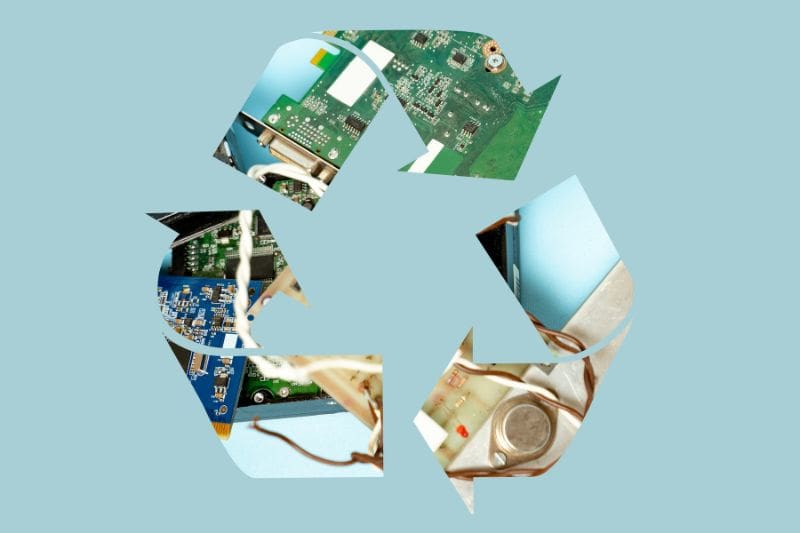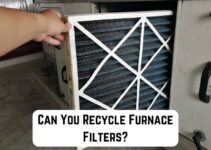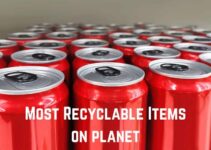One does not need to be a regular user of electronic products to know that electronics will not last for life. So, what happens to them after they break down? Sometimes, they are left to waste away without re-use.
Other times, these wastes are recycled, and that’s where e-waste recycling comes in. You may ask, what is e-waste recycling? What are the processes involved? What benefits are its benefits?
Well, we’ve got you covered. In this article, we’ll consider these questions in detail. We’ll also highlight common e-waste and touch on the challenges caused by e-waste recycling.
So, let’s get right to it.
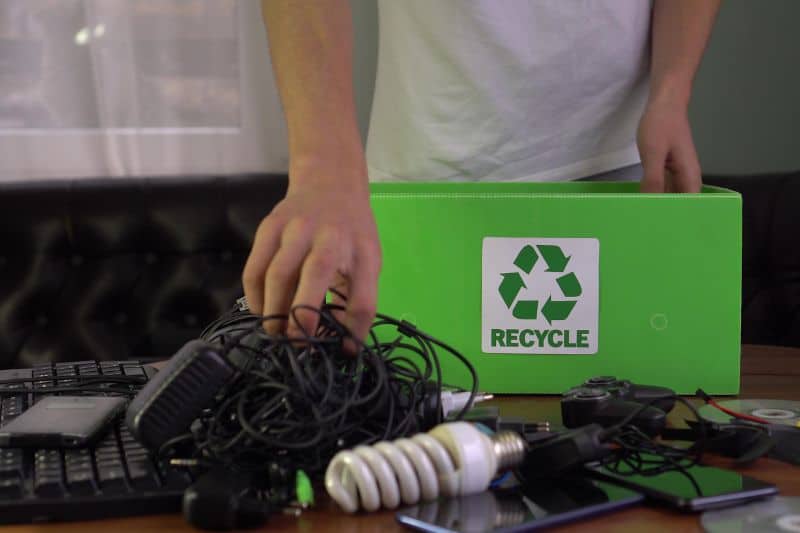
What Actually is E-waste Recycling?
Before we dive into examining what e-waste recycling is, let’s get the basics out of the way. So, what is e-waste in the first place?
E-waste is short for electronic waste. That is, trash generated from broken, obsolete, and surplus electronic devices. You will also hear people refer to it as e-scraps.
Typically, these electronics often contain toxic chemicals and hazardous materials. Hence, when not properly disposed of, these electronics can cause the release of toxic substances into our environment.
E-waste recycling then refers to the reprocessing and re-use of these electronic wastes. It’s just that simple. It is a process that seeks to recover material from electronic waste for use in new electronic products.
These electronic wastes may be in the form of home appliances like air conditioners, televisions, electric cookers, air condoners, heaters, DVDs, fans, microwaves, and radios.
Of course, information tech equipment like your computers, laptops, mobile phones, batteries, hard disks, circuit boards, and monitors still fall under the category of e-waste once they’ve served their purpose.
E-waste recycling is one of the most talked-about issues in the world today due to its potential to reduce environmental hazards and pollution. There is also the fact that it can protect our lives as humans and other life forms existing in our world.
Recycling of e-waste is a growing trend and was initiated to protect human and environmental health mainly due to the widespread environmental pollution impacts of e-waste.
Even more, millions of electronics are in use daily. Then, when they reach the tail of their lifespan, they mostly waste away in landfills. Guess what, only 12.5% of e-waste is recycled.
Components of E-waste That Can be Recycled
So, you will agree that e-waste recycling is an activity that you must encourage at any level. Here are some of the components of e-waste that can be recycled:
Plastic
Plastic materials may be retrieved and sent for recycling. The recyclers can then use the plastic materials to manufacture items like plastic sleepers and vineyard stakes. You can also get fence posts, plastic trays, insulators, equipment holders, and more.
Metal
Metals can also be retrieved and recycled to manufacture newer steel products and metals.
Glass
You can extract glass from CRTs (Cathode Ray Tubes) of computer monitors and televisions. But then, it’s worth noting that CRTs contain substances such as lead, which can harm humans and the immediate environment. This makes it difficult to retrieve a glass from CRTs.
But still, there are certain steps you may take to ensure safer CRT recycling.
First, separate the CRT from the monitor or television. Then, shred the CRT into small pieces. Remove the metals with over-band magnets. This helps you remove ferrous and even non-ferrous objects from that glass.
After this, use washing lines to clear phosphors and oxides from that glass. The last step is called glass sorting. This is where you separate non-leaded from leaded gas. You can then use the extract to make newer screens.
Mercury
Devices containing mercury may be sent to recycling facilities already equipped with specialized technology to eliminate mercury. The end product of this elimination includes metric instruments, dental amalgams, and fluorescent lighting.
Circuit Boards
There are accredited and specialized companies smelting and recovering resources like tin, gold, silver, copper, palladium, and valuable metals.
Hard Disk
When shredded and processed, you can recover aluminum ingots from hard disks. These are particularly useful for automobiles.
Toner and Ink Cartridges
Recyclers in various manufacturing industries that remanufacture them take these toners and ink cartridges for recycling. They then use retrieved plastic and metals as raw materials for other products.
Batteries
You can take your scrap batteries to specialist recyclers to recover cadmium, steel, nickel, and cobalt for reuse in new batteries. They are also useful for fabricating stainless steel.
There is an endless list of other recyclable electronic objects besides those listed.
Step-by-Step Process of E-waste Recycling
Recycling electronics is often a challenging activity. E-scraps are typically sophisticated and manufactured from diverse elements such as metals, plastics, and glass. While this process often varies, there is a general process.
So, here is what you need to know.
Step 1: Collecting and Transporting
This is the first stage of recycling e-waste. Here, recyclers place take-back booths or collection bins in specific places. When these bins are filled, the recyclers transport the e-waste to recycling facilities and plants.
Step 2: Shredding and Sorting
After collecting and transporting, the next step is to shred and sort the e-waste. The success of subsequent separation relies on shredding. And this is why efficiency is essential at this stage.
Shredding involves breaking e-waste into smaller pieces for proper sorting. With the use of hands, these tiny pieces get sorted and then manually dismantled. This is typically labor-intensive as waste items are, at this stage, separated to retrieve different parts.
Following this step, materials are typically categorized into core materials and components. These items are then further sorted into various categories. These categories often include items that can be directly reused and those that need additional recycling processes.
In any case, e-waste is often manually sorted, while compounds such as fluorescent light, batteries, UPS batteries, and toner cartridges should not be crushed or shredded by hand.
Step 3: Dust Extraction
The small waste particles are evenly dispersed on the conveyor belt through a shaking process. These finely spread e-waste fragments are then further disintegrated. During this stage, any dust is extracted and disposed of in an environmentally compliant manner, ensuring no environmental degradation occurs.
Step 4: Magnetic Separation
After this, a strong overhead magnet helps you separate steel and iron from other wastes. This way, you have successfully recycled the steel from the waste stream.
However, some mechanical processes may sometimes be required to separate circuit board, copper, and aluminum from other waste particles. This is especially true where they are mostly plastic.
Step 5: Water Separation
After this, water separation tech becomes relevant to separate the glass from the plastic.
You can then send leads that contain glass to smelters to use in the production of batteries, X-ray tubes, and new CRTs.
Step 6: Purification of Waste Stream
The next thing is locating and extracting leftover metals from plastics to purify the waste stream further.
Step 7: Preparing Recycled Materials For Sale
The final stage is preparing recycled materials for sale. Here, the materials separated during SSS get prepared for sale as raw materials to produce new electronics.
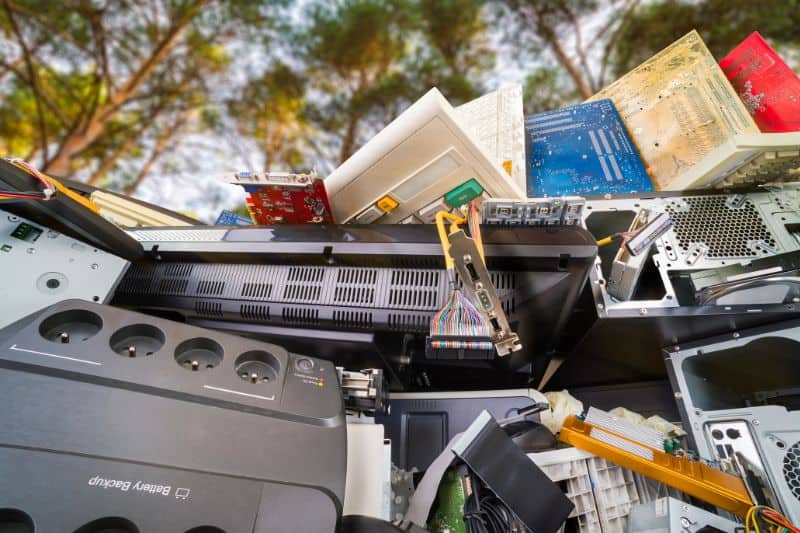
Benefits of E-waste Recycling
Now that you know about the stages, you might be wondering what’s in for me. Not to worry, there are several benefits that you can derive from e-waste recycling.
1. E-waste Recycling Helps to Conserve Available Natural Resources
E-waste recycling helps recover valuable materials from electronic products that are either old or no longer used. In turn, this saves and conserves natural resources.
This is because manufacturers can now obtain raw materials from recycled waste. Consequently, there is less need to go to earth for raw materials.
So, yes, there is less need to get copper or lead or metal from Mother Nature. You will need to remember that these materials are not inexhaustible to realize how much good this represents.
2. It Prioritizes Environmental Protection
As you may have observed from the abovementioned processes, e-waste recycling prioritizes environmental protection. The initiative prioritizes properly handling, processing and managing hazardous and toxic substances such as lead, mercury, and cadmium. All substances you may find in your e-waste stream.
As you have read, as one of the sub-steps of e-waste processing, any dust sorted from shredded particles must be disposed of in an environmentally friendly manner. This way, the hazards that these elements usually pose to our environment get substantially reduced, thanks to e-waste recycling.
3. Creates Jobs
E-waste recycling is creating new jobs for persons such as professional recyclers. What’s more is that, by so doing, it has created a secondary market where recycled materials are the primary commodity.
The Environmental Protection Agency released findings that show the magnitude of economic benefits that come from e-waste recycling. Guess what. This even beats the results derived from the REI Study earlier in 2016.
In a year, the US’s recycling activities provided 757,000 jobs, $6.7 billion in tax revenues, and $36.6 billion as wages.
By implication, for every thousand tons you recycle,1.57 jobs are created, $ 76,000 in wages paid, and $ 14,101 in tax revenues. It seems like a lot of benefits come from trash, right? But there’s more.
For a million laptops you recycle, you will have saved the equivalent of electric power capable of running 3657 households for one year. More, for a million cell phones, you can recover gold weighing 75 pounds, silver of 772 pounds, copper of 35,274 pounds, and palladium of 33 pounds. Amazing, right?
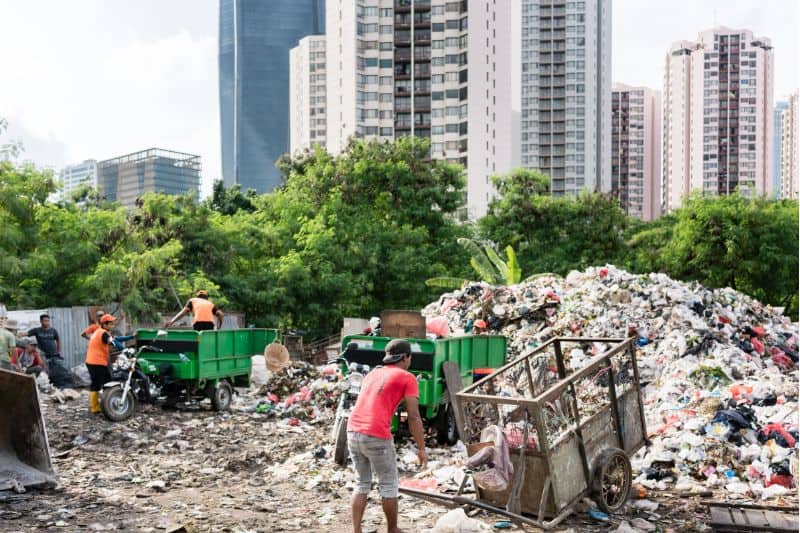
4. Saves Landfills and Reduces Global Warming
Usually, uncollected e-waste gets dumped at incinerators and landfills. By recycling e-waste, we are reducing the amount of e-waste pilling up at these places.
This is because two-thirds of waste in landfills is biodegradable and capable of breaking down and returning to its natural elements. As these wastes break down and decompose, they produce harmful gases (Methane and CO2) – greenhouse gases – which heavily contribute to global warming.
Since landfills also pollute the water and soil in our local environment, activities like e-waste recycling, which seek to reduce these environmental concerns are not merely beneficial, but also life-saving.
Conclusion
E-waste recycling is a serious global concern for a lot of reasons. It has a strong bearing on our immediate environment as humans and life on earth generally. It even promises significant economic returns for persons, communities, and even nations.
Many people have begun to tap from the floodgate of opportunities provided by e-waste recycling. In developing nations, entrepreneurs are taking advantage of e-recycling as a steady revenue stream and advancing environmental goals.
Although the steps involved might be labor-intensive, they are easy to follow. From collecting and separating to preparation for sale, there are several steps involved which you can easily flow with. And of course, you too can directly benefit from e-waste recycling and also help to save our planet.
